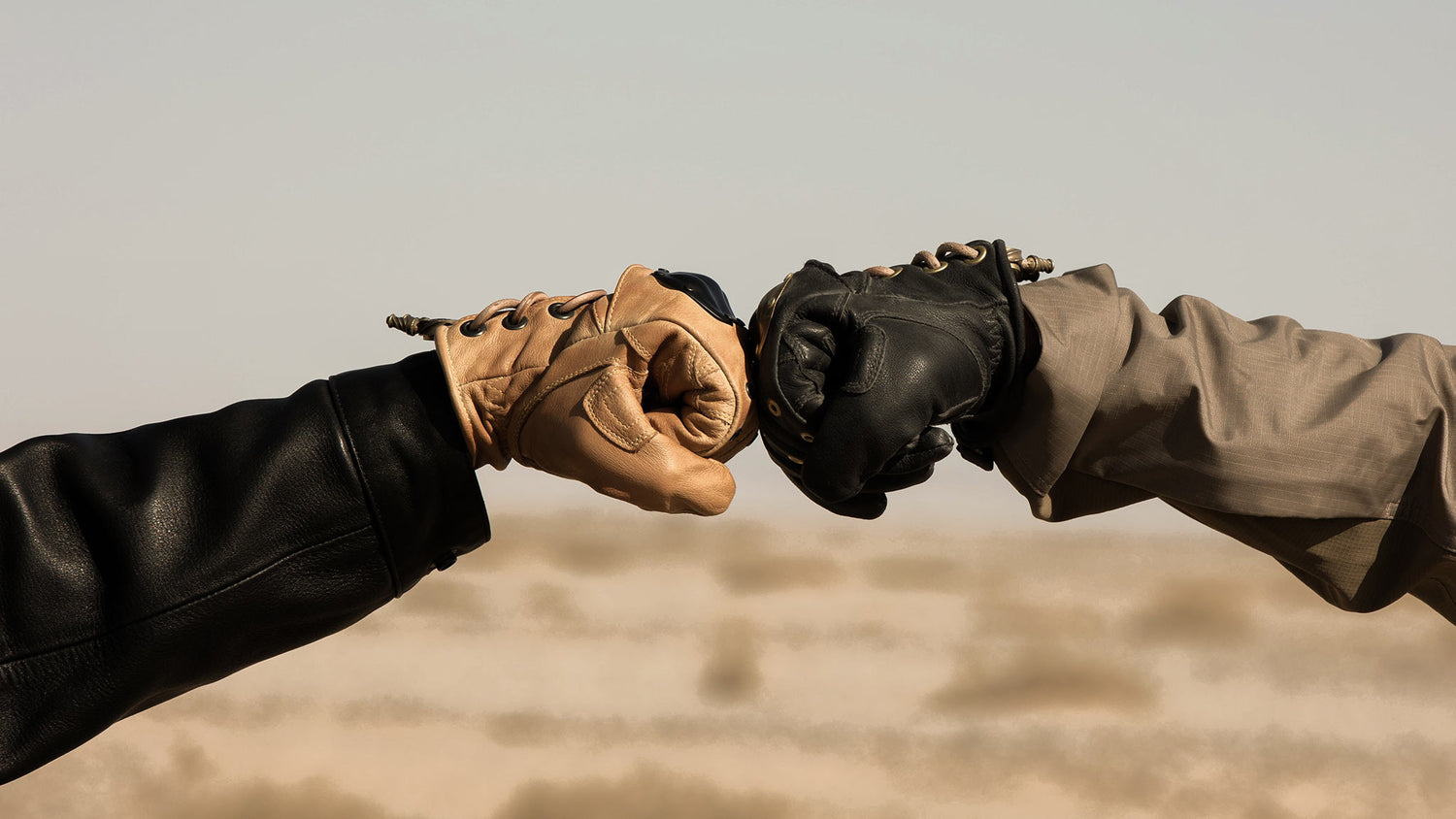
This is a really significant issue. If you are reading this blog, it is likely that you are contemplating leaving your current life behind for a new one on the road, either temporarily for a few months or years, or permanently for the rest of your life. In either case, a motorcycle journey indicates that something momentous and life-altering is going to take place, and the very thought of it probably has you grinning from ear to ear.
It's easy to feel overwhelmed or discouraged by the amount of pre-trip preparation that lies ahead of you, especially in the midst of all the enthusiasm and watching vacation movies on YouTube. Don't worry... It's a huge deal to think of going on a motorbike trip, but it's not that difficult to be ready for one. It just requires some patience and thorough planning on your part.
Use this guide to help you get started with your planning for your trip, regardless of how long you plan to be away from home: a few weeks, several years, or all over the world. It's a big part of the fun (well, not half, but it can be fun). Investing in this material at this very now will prove to be quite beneficial in the long term. Good luck!

This trip is all yours.
What are some specific goals that you have for this motorcycle trip? There are a lot of individuals out there traveling on bicycles or motorcycles, and every one of them has their own individual perspective on what kind of trip they wish to have. No two journeys are ever exactly the same. Before moving on to the subsequent stages listed below, you should give careful consideration to what you want, because what you want out of your trip will have an effect on every decision you make.
For example, some bike tourists do not like to go off-roading, so purchasing a machine with a limited capacity and a single cylinder would be a waste of money for them. There are some people who despise camping, therefore it would be pointless for them to travel to Mongolia.
Make a list of the things that you want and the things that you don't want, adhere to the list, and don't let yourself get distracted by what other people are doing. It is not their journey; rather, it is yours that must be taken.
Prepare your bags for travel in any climate

When you ride a motorcycle, you are putting yourself in a position where you are totally vulnerable to the weather. You will feel every gust of wind, drop of rain, and shift in temperature in a manner that someone sitting in a car will never feel them.
Even if you aren't going across the nation, the temperature might change significantly depending on the altitude you are at and the time of day, and this can happen even within the same state. It is possible that you will need to prepare for riding in a variety of conditions, from snow to rain storms to the extreme heat of the desert. Because riding for an extended period of time in conditions such as heavy wind or extreme heat or cold can be physically taxing and even dangerous at times, it is essential to adequately prepare for any and all possible.

Bring layers with you so that you may readily add on or shed clothing as the situation demands along the trail. This is essential not just for controlling the temperature, but also for ensuring one's own safety in the event of an accident. Consider purchasing protective gear with built-in armor and textiles that are resistant to abrasion, if not all of the layers, then at least one of them (such as Kevlar-DuPont).
In the case that it starts to pour heavily, having a rain suit, waterproof gloves, and boot covers on hand will be extremely helpful. Be sure to have these things within easy reach so that you can swiftly put on a raincoat and an umbrella in the event that the weather takes a turn for the worse.
If you plan on venturing out during the colder months of the year, you should give some thought to purchasing warm clothing and accessories. The summer is the best season to buy heated apparel because sales are typically run by many different brands during this time. After a few months have passed, you will be able to plug in your jacket, pants, gloves, and boot liners and remain toasty even when the weather is below freezing. I guarantee that you will not regret paying the money at that point.
Have multiple snack breaks throughout the day

When you get off a motorcycle after riding it for a lengthy period of time, you'll probably find that everything hurts. Taking regular pauses is one strategy that can be used to help alleviate the worst symptoms of saddle sores and muscular discomfort. You won't be happy with yourself the next day if you only pull over every 100 miles for a five-minute gas stop. Instead, make it a routine to get off the bike and stretch every time you stop to rest while riding it. Make sure to give yourself breaks of at least 15 minutes and get some exercise if you're able to.
Bring along a lot of water and food in case you start to feel thirsty or your blood sugar starts to decrease. If you are riding during the hottest months of summer, you may find that you need to stop more frequently than usual in order to ensure that you are able to remain hydrated. Some cyclists even carry a hydration pack with them so they may sip water on the move without having to stop. Keeping yourself attentive and energized on long rides can be made easier with the help of a short snack in between meals. Apples, almonds, energy bars, and dried fruit are examples of foods that are simple to pack and tend to maintain their quality even when exposed to fluctuating temperatures. Vegan jerky is my go-to choice for an impromptu snack while driving. If you are able to locate it, it is an excellent source of protein and does not normally spoil, even if it is left in a warm saddlebag for the entirety of the day.
Every time you come to a halt, make it a point to get off the motorcycle and stretch, drink some water, and eat something. Although it is tempting to just quickly fill up the tank and get back on the road, you should resist this urge. It will make the whole journey that much more enjoyable for everyone involved.

Bring the necessary equipment
Motorcycles are known for their unreliability, which is perhaps one of their strongest selling points. It is never foolish to hope for the best while making preparations for the worst possible outcome. Before embarking on a longer journey, it is highly recommended that you have a trained mechanic inspect and tune up your bicycle, and you should repeat this process upon your return. Even if your bike is relatively new or was just serviced not too long ago, you still need to make sure that the brakes, tires, lights, and fluid levels are all checked, and that any loose bolts are tightened.
Long distance car excursions frequently necessitate continual maintenance, as the tires wear out, pieces rattle free, and the oil may require topping off at some point. It is always a good idea to bring a basic toolkit with you in case you need to do any repairs on the side of the road; however, you should make sure that you have the right equipment for your bike. To work on certain motorcycles, you'll need metric tools, while others take imperial measurements. Whether you aren't sure which tools you need, check with the manufacturer of the motorcycle you own to see if they sell pre-assembled tool kits. This is typically an excellent place to begin looking for tools.
Think about bringing along some spare spark plugs, fuses, and light bulbs as well. A lock-picking set, locking pliers, extra bungee cords, electrical tape, a tire repair kit, a tire pressure gauge, zip ties, extra bungee cords, and a flashlight are some of the other things that can come in helpful in an emergency situation.
Many simple repairs that need to be done on the side of the road can be completed successfully with the assistance of YouTube tutorials, even if you have no prior experience working on motorcycles. In the event that nothing else works, check to see that your insurance or roadside assistance program covers the cost of towing a motorcycle.
Have a backup plan
In a nomadic trip, there is no strategy, but it is a good idea to have a backup plan in case something unexpected happens. Although this is true for all types of travel, when it comes to taking a road trip on a motorbike, it is extremely necessary to have a backup plan in place in the event that things does not go according to the initial plan. It is possible that you will experience inclement weather or variable road conditions, both of which will make it impossible for you to go in the path that you had intended. The paved roadway that you have been traveling on for kilometers may suddenly be replaced by gravel if road construction is taking place in the area. This may lead you to an unanticipated dirt road. Have a backup plan
Although this is true for all types of travel, when it comes to taking a road trip on a motorbike, it is extremely necessary to have a backup plan in place in the event that things does not go according to the initial plan. It is possible that you will experience inclement weather or variable road conditions, both of which will make it impossible for you to go in the path that you had intended. The paved roadway that you have been traveling on for kilometers may suddenly be replaced by gravel if road construction is taking place in the area. This may lead you to an unanticipated dirt road.
Now would be a good time to get off the main route and ride like a nomadic.


